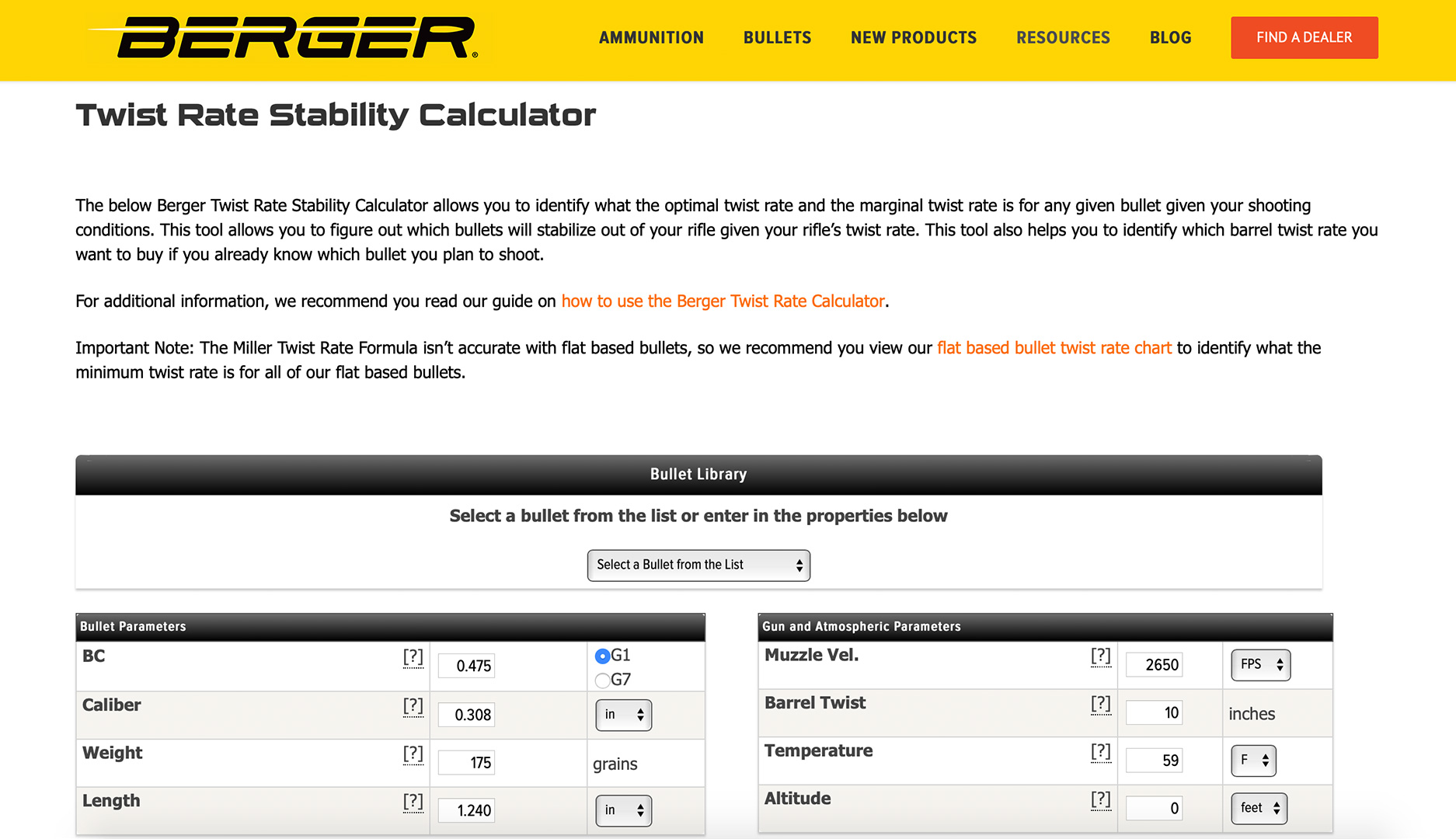
Rifling twist rates are something we tend to accept from the factory with little question beyond, “How heavy a bullet will this barrel let me shoot?” But a free online twist rate calculator allows us to reverse the question to, “What twist rate do I need to stabilize my favorite bullet?”
We don’t need to understand the deep mathematical details of the relationship between twist rate and bullet length and weight, but we must understand that an important relationship does exist. That mathematical relationship had been worked out by Sir Alfred George Greenhill in 1879, which we’ve covered before. In 2005, Don Miller refined Greenhill’s formula, and his work is widely used today in application to modern boattail rifle bullets. For we math and ballistics laymen who want to optimize the matchup between our loads and our rifles, today we have plug-and-play software programs, some available online at no cost. But they are not created equal.

While there are a number of very useful free online ballistic calculators, not all include a variable twist rate and some only work with specific bullets from a single manufacturer. Berger’s Twist Rate Calculator is perhaps the most comprehensive, yet at the same time the least-complex for the layman. There are only eight input fields: BC, bullet caliber, bullet weight, bullet length, muzzle velocity, barrel twist, temperature and altitude. The user can also select any Berger bullet from a drop-down menu for automatic input of those first four variables.
When you’ve filled those eight fields, click on, “Calculate Stability.” A pointer on a sliding graph appears to show whether or not your bullet will be stable in flight, given the variables you’ve input. The calculator also tells you what twist rate you need to stabilize your chosen bullet. Pretty simple, even for a layman.
As explanation, the number resulting from the calculation is a measure of specific gravity (SG) which, in this application, refers to the gyroscopic stability of a bullet imparted by its spin. The Berger website explains, “Mathematically, SG is the ratio of the stabilizing influences of rotating mass vs. the destabilizing effects of aerodynamics. If this ratio is greater than 1.000, it means the bullet has more stabilizing influence than destabilizing influence, so it’s said to be stable. In practice, a bullet needs an SG of 1.5 or greater to be well stabilized, and fly with the maximum effective BC.” Berger provides a more detailed, yet still-short explanation of SG in layman’s terms.
Berger’s twist rate calculator apparently utilizes software based on Miller, which does not work as well with flat-base bullets, so they include a link to a chart of recommended twist rates for Berger bullets of flat-base configuration.
Berger’s free tool is ideal when we’ve got our heart set on a specific bullet and want a custom or factory barrel with a most complimentary twist rate. When it comes time to replace a worn-out match gun barrel, we may discover the Berger calculator recommending a twist rate faster or slower than we’ve been using with our pet load, with a resultant improvement in accuracy. For the curious handloader, inputting different muzzle velocities in the Berger Twist Rate Calculator illustrates for us the relationship between a bullet’s velocity and its stability, an aid to quickly finding an optimum load.
And of course, we can learn beforehand whether our chosen bullet and twist combination will work. That equates to a savings in time, effort and money—and that’s the most practical kind of math.
Read more: G1 vs. G7 Ballistic Coefficients


































